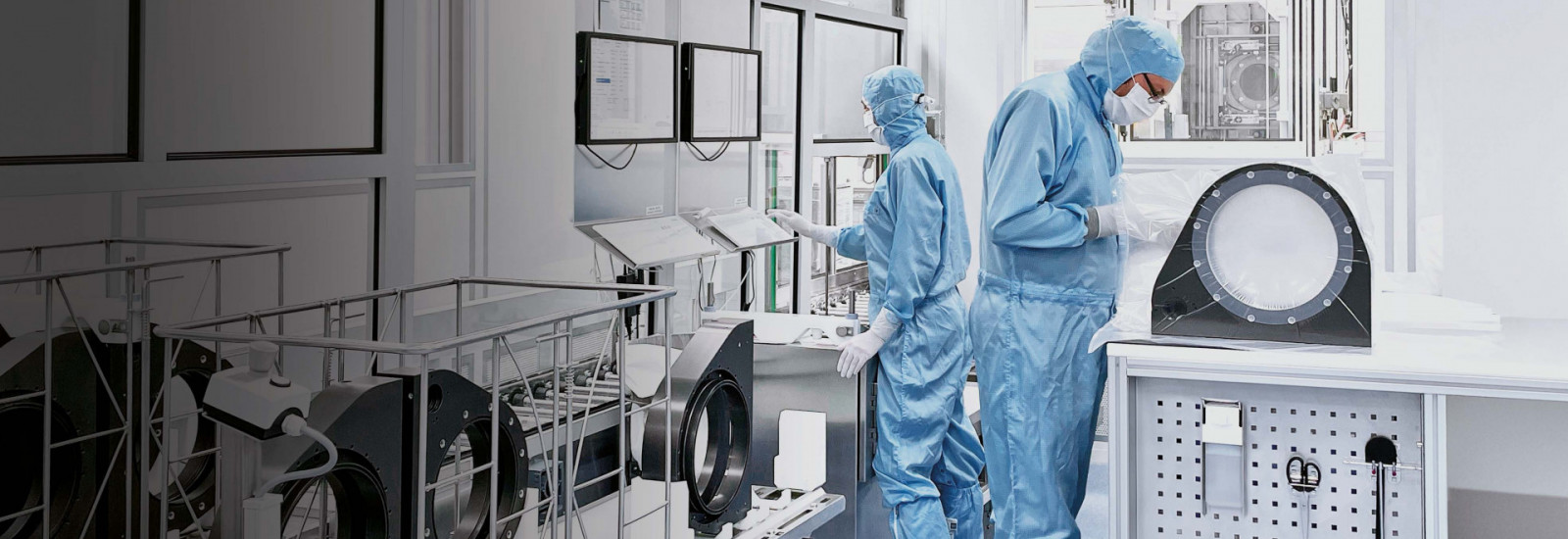The use of aggressive cleaning agents is the traditional solution to meet the requirements. VAT focuses on environmentally friendly alternatives and has started a program to reduce and eliminate aggressive substances.
VAT is known for innovative, high-performance vacuum valve solutions used in highly demanding vacuum processes worldwide. Semiconductor manufacturing is such a process: determined by high-purity production steps where any contamination, organic or inorganic, must be avoided. A tiny speck of dust on the surface of a semiconductor can ruin it, limit production quality and increase costs. Therefore, only high-purity components are used, which behave physically neutral in the production process and do not release any particles.
VAT therefore uses special cleaning processes in production to meet the high purity requirements. This makes the decisive difference compared to standard solutions. "Since many VAT customers operate production processes that require a contamination-free environment, our expertise in high-purity cleaning is a key competence of VAT," explains Christian Schelle, VAT Head of Purity.
However, many of the most effective cleaning agents - dilute acids, bases and surface-active substances - are very aggressive, which poses some challenges in terms of occupational safety and environmental protection when handling them.
Effective, but aggressive - does it have to be?
In order to eliminate any risk in handling, application and disposal, considerable effort is required, which is also defined by ISO 14001, which VAT follows at all its sites worldwide. In order to reduce risk, effort and ultimately also costs, VAT has
has started a program for the development of alternative cleaning processes for all sites. The first developments are already being implemented.
Take acetone, for example: the colorless, flammable organic solvent is a highly effective cleaning agent - but toxic in direct contact and in larger doses. VAT has succeeded not only in reducing the use of acetone in VAT cleaning processes, but in completely replacing it with a newly developed residue-free high-performance cleaner for grease, oil and other soiling. This replacement cleaner contains no halogenated or aromatic solvents and is therefore much safer to use.
Cleaning with less aggressive agents
In addition to replacing cleaning agents, however, VAT is also looking for innovative, modified cleaning methods to clean vacuum parts in a more environmentally friendly way. Initial pilot tests show that such process changes can be just as effective as conventional cleaning methods, explains Christian Schelle. For example, by simply repeating a process with a less effective but safer cleaning agent, VAT achieves the same results as with aggressive chemicals. Another option, he says, is to combine different cleaning methods in the right mix and frequency. Result: the effect is just as good as with the old, more aggressive substances.
Better through continuous improvement
Heinz Märkli, Environmental Program Manager at VAT, coordinates the developments and introduction of these new processes together with other chemical and environmental experts in the company. "Of course, this is an ongoing process," Heinz Märkli emphasizes. In the future, VAT will continue to look for ways to further reduce the use of aggressive substances and to further increase safety in the workplace.
